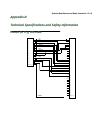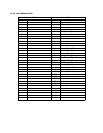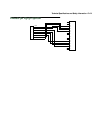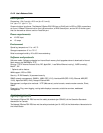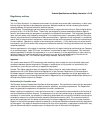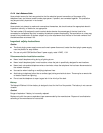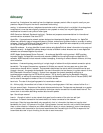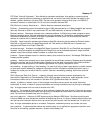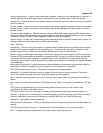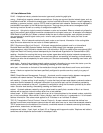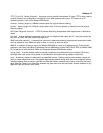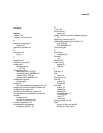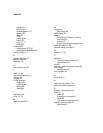Glossary-127
DTE (Data Terminal Equipment): Term defined by standards committees, that applies to communications
equipment, typically personal computers or data terminals, as distinct from other devices that attach to the
network, typically modems or printers (DCE). The distinction generally refers to which pins in an RS-232-C
connection transmit or receive data. Pins 2 and 3 are reversed. Also see DCE.
EIA (Electronic Industry Association): A North American standards association.
Ethernet: A networking protocol that defines a type of LAN characterized by a 10 Mbps (megabits per second)
data rate. Ethernet is used in many mainframe, PC, and UNIX networks, as well as for EtherTalk.
Ethernet address: Sometimes referred to as a hardware address. A 48-bits long number assigned to every
Ethernet hardware device. Ethernet addresses are usually expressed as 12-character hexadecimal numbers,
where each hexadecimal character (0 through F) represents four binary bits. Do not confuse the Ethernet
address of a device with its network address.
EtherTalk: Apple’s data-link software that allows an AppleTalk network to be connected by Ethernet cables.
EtherTalk is a protocol within the AppleTalk protocol set. Two versions of EtherTalk are in common use,
designated as Phase I and Phase II EtherTalk.
extended network: A network using AppleTalk Phase II protocols; EtherTalk 2.0 and TokenTalk are extended
networks. LocalTalk networks are compatible with Phase II but are not extended because a single LocalTalk
network cannot have multiple network numbers or multiple zone names.
firmware: System software stored in a device’s memory that controls the device. The Netopia ISDN Router’s
firmware can be updated.
gateway: A device that connects two or more networks that use different protocols. Gateways provide address
translation services, but do not translate data. Gateways must be used in conjunction with special software
packages that allow computers to use networking protocols not originally designed for them.
hard seeding: A router setting. In hard seeding, if a router that has just been reset detects a network number
or zone name conflict between its configured information and the information provided by another router, it
disables the router port for which there is a conflict. See also non-seeding, seeding, seed router, and soft
seeding.
HDLC (High-Level Data Link Control): A generic link-level communications protocol developed by the
International Organization for Standardization (ISO). HDLC manages synchronous, code-transparent, serial
information transfer over a link connection. See also SDLC (Synchronous Data Link Control).
header: In packets, a header is part of the envelope information that surrounds the actual data being
transmitted. In e-mail, a header is usually the address and routing information found at the top of messages.
hop: A single traverse from one node to another on a LAN.
hop count: The number of nodes (routers or other devices) a packet has gone through. If there are six routers
between source and destination nodes, the hop count for the packet will be six when it arrives at its destination
node. The maximum allowable hop count is usually 15.
hop count reduction: A feature of AURP supported by the Netopia ISDN Router. Tunnels and point-to-point
links over WANs can often exceed the maximum allowable hop count of 15 routers. Network administrators can
use the hop count reduction feature to set up tunnels and point-to-point links that exceed the 15-router limit.
host: A single, addressable device on a network. Computers, networked printers, and routers are hosts.
host computer: A communications device that enables users to run applications programs to perform such
functions as text editing, program execution, access to data bases, etc.



